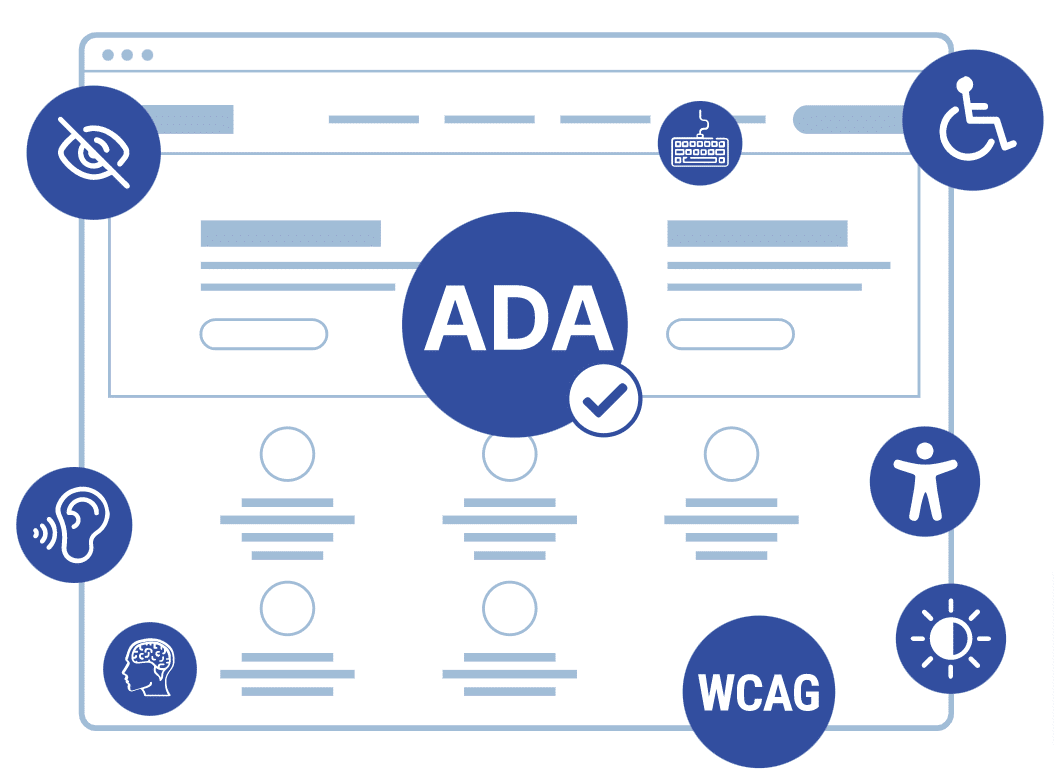
In today’s digital age, ensuring that your website is accessible to everyone is not just a good practice—it’s a legal requirement. The Americans with Disabilities Act (ADA) mandates that public spaces, including websites, must be accessible to individuals with disabilities. This article explores what ADA compliance means for websites, why it matters, and how you can achieve it.
What is ADA Compliance?
The Americans with Disabilities Act (ADA) is a civil rights law that was enacted in 1990 to prohibit discrimination based on disability. While the ADA was originally designed to address physical accessibility in public spaces, its principles have been extended to digital spaces as well. ADA compliance for websites means that your site must be accessible to people with various disabilities, such as visual, auditory, cognitive, and motor impairments.
Why ADA Compliance Matters
Legal Requirements: ADA compliance is not just a recommendation but a legal obligation. Failure to comply can result in lawsuits, fines, and damage to your reputation. There have been numerous legal cases where businesses were sued for not having accessible websites.
Inclusivity and Accessibility: Making your website accessible ensures that all users, regardless of their abilities, can access and interact with your content. This is not only a legal requirement but also a moral and ethical responsibility. An accessible website can reach a broader audience, improving user experience and customer satisfaction.
SEO Benefits: Many accessibility practices, such as clear navigation and text descriptions for images, also benefit search engine optimization (SEO). Accessible websites often have better structure and content, making them easier for search engines to index and rank.
Market Reach: There are millions of people with disabilities in the United States alone. By ensuring your website is accessible, you can tap into this significant market segment and provide an equal opportunity for engagement.
Key Principles of ADA Compliance
To achieve ADA compliance, websites must adhere to several key principles and guidelines. These principles are largely based on the Web Content Accessibility Guidelines (WCAG), which are developed by the World Wide Web Consortium (W3C). The primary principles are:
Perceivable: Information and user interface components must be presented in ways that users can perceive. This means providing text alternatives for non-text content (like images), ensuring that audio and video content is captioned, and making sure that content can be presented in different ways without losing meaning.
Operable: User interface components and navigation must be operable. This involves ensuring that all functionalities are available from a keyboard (not just a mouse), providing enough time for users to read and use content, and avoiding content that could cause seizures or physical reactions.
Understandable: Information and operation of the user interface must be understandable. This includes making text content readable and understandable, ensuring that web pages appear and operate in predictable ways, and providing assistance when users make mistakes.
Robust: Content must be robust enough to be interpreted reliably by a wide variety of user agents, including assistive technologies. This involves using standard HTML and CSS practices and ensuring compatibility with current and future technologies.
Steps to Achieve ADA Compliance
Achieving ADA compliance involves several steps:
Audit Your Website: Conduct a thorough audit of your website to identify accessibility issues. This can be done using automated tools like WAVE or Axe, but it’s also important to involve real users with disabilities to get a comprehensive understanding of accessibility barriers.
Implement Accessibility Best Practices: Based on the audit results, implement changes to address identified issues. This may include adding alt text to images, ensuring that all interactive elements are keyboard accessible, and improving color contrast.
Adopt Accessible Design: Ensure that your website’s design follows accessibility best practices. This includes using clear and consistent navigation, providing text alternatives for multimedia, and ensuring that your site’s structure is logical and easy to follow.
Regular Testing and Maintenance: Accessibility is not a one-time fix but an ongoing process. Regularly test your website for accessibility and stay updated with the latest guidelines and best practices. Continually train your team on accessibility issues and keep improving your site based on user feedback.
Legal and Professional Guidance: Consider consulting with legal experts and accessibility professionals. They can provide valuable insights and ensure that your website meets all legal requirements and best practices.
Conclusion
ADA compliance for websites is crucial for both legal reasons and ethical considerations. Explore Our Services By ensuring that your website is accessible, you not only avoid potential legal issues but also create a more inclusive and user-friendly experience. Implementing accessibility best practices can enhance your website’s reach, improve SEO, and provide a better experience for all users. Regular audits, updates, and professional guidance are essential for maintaining ADA compliance and fostering an inclusive digital environment.